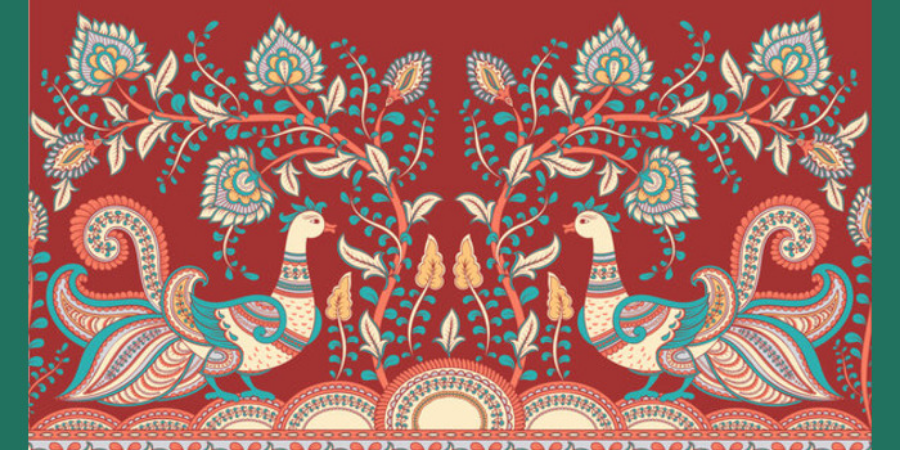Fun Facts
General Reviews
History
History And Manufacturing Of Kalamkari: A Time-honored Craft
History:
Ancient Origins:
- Kalamkari, an ancient Indian art form, has roots dating back more than 3,000 years.
- The word "Kalamkari" is derived from two Persian words: 'kalam' meaning pen and 'kari' meaning craftsmanship, reflecting the technique of hand-painting or block-printing on fabric.
Temple Art Tradition:
- Kalamkari found its prominence in the temples of Andhra Pradesh and Telangana in South India.
- Artists employed the Kalam, or pen, to depict mythological stories, intricate motifs, and religious themes on large canvas backdrops used during temple rituals and ceremonies.
Mughal and Golconda Influence:
- The craft gained further impetus during the Mughal era when Persian influences merged with local styles.
- The Golconda Sultanate, known for its patronage of arts, played a crucial role in the evolution of Kalamkari, blending it with Persian and Indian aesthetics.
Revival in British India:
- Kalamkari faced a decline during British rule due to economic and cultural shifts.
- The art form experienced a revival in the early 20th century, thanks to efforts by artists and scholars to preserve and promote traditional crafts.
Manufacturing:
Two Techniques:
Srikalahasti Style:
- Originating from the temple town of Srikalahasti, this style involves freehand drawing with a pen, typically using natural dyes.
- Artists use a bamboo or date palm stick, pointed at one end and tied with fine hair, to draw intricate patterns.
Machilipatnam Style:
- Also known as the "Masulipatnam" style, it involves block printing and hand-painting.
- Wooden blocks with intricate designs are used for printing, and artists employ the pen for fine detailing.
Materials and Dyes:
- Fabric: Cotton or silk fabric serves as the canvas for Kalamkari. Cotton is more commonly used for its absorbent qualities.
- Natural Dyes: Vegetable dyes derived from plants, minerals, and other natural sources are employed. Common colors include indigo, pomegranate, myrobalan, and madder.
Steps in Kalamkari Manufacturing:
- Preparation of Fabric: The fabric is treated to remove starch and impurities, ensuring better absorption of dyes.
- Outline Drawing: Artists draw the initial outlines using the Kalam or block, defining the boundaries of the design.
- Dyeing: Natural dyes are applied to different sections of the design, and the fabric is left to dry.
- Hand-Painting: Artists use the pen to add intricate details, shading, and fine lines.
- Final Setting: The fabric is treated to set the colors and ensure their longevity.
Themes and Motifs:
- Kalamkari often depicts mythological narratives, scenes from epics like the Ramayana and Mahabharata, and motifs inspired by nature, including flowers, birds, and animals.
Contemporary Significance:
- Kalamkari has transcended traditional uses and found its way into contemporary fashion, home decor, and art.
- The revival and promotion of Kalamkari contribute to the preservation of a rich cultural heritage and the sustenance of traditional artisans.
In conclusion, Kalamkari stands as a testament to India's rich artistic heritage, with its intricate designs, vibrant colors, and a history that weaves together ancient traditions and cultural influences.


